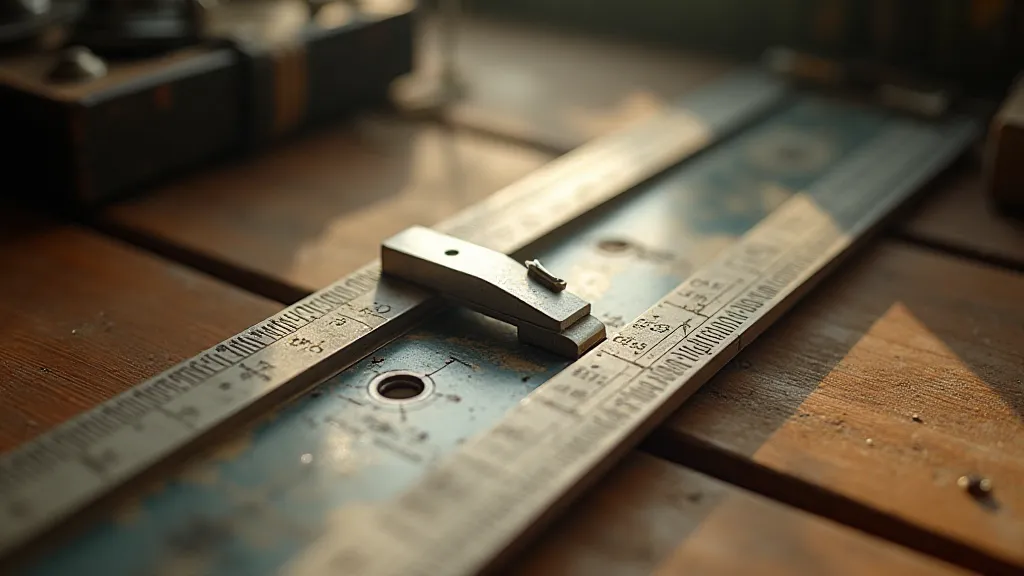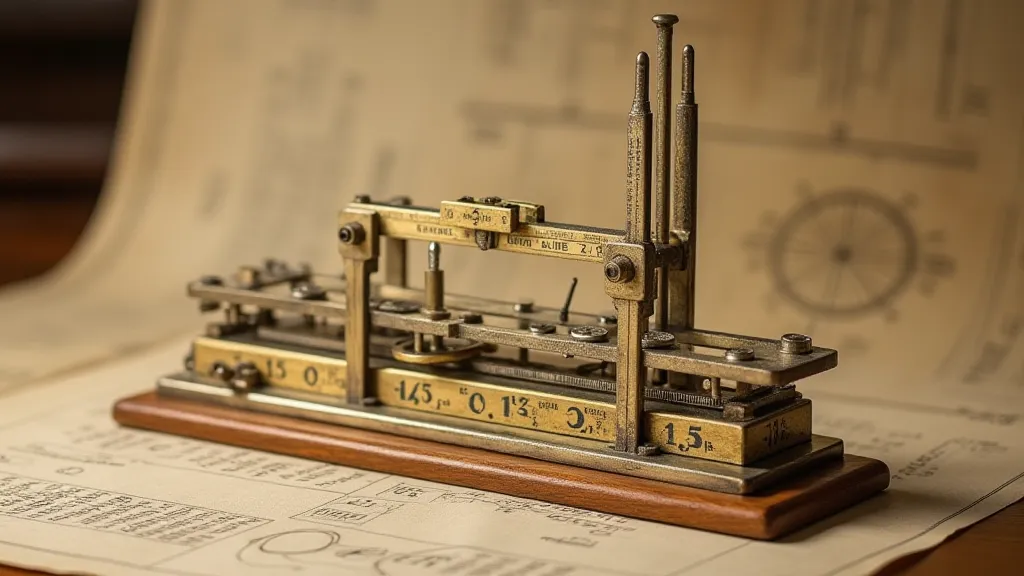When Analog Met Algorithm: The Slide Rule’s Twilight Years and the Rise of Electronic Calculators
There’s a certain melancholy that clings to antique tools, a poignant echo of the hands that wielded them and the minds they served. Consider the slide rule, an instrument of precision and ingenuity that once held a place of reverence in engineering, science, and mathematics. It's a tangible link to an era before microchips and digital displays – a time when calculations were powered by human intellect and beautifully crafted mechanical devices. My grandfather, a civil engineer, used a Pickett Model N2 slide rule throughout his career. The smell of the casein plastic, the satisfying click of the scales… these are memories etched as deeply as any numerical value he derived from it.

The Reign of the Analog Computer
For nearly two centuries, the slide rule reigned supreme. Its origins can be traced back to the work of William Oughtred in the 17th century, but the device we recognize today solidified in the 19th and early 20th centuries. It wasn't a calculator in the modern sense; it didn't perform calculations directly. Instead, it allowed users to perform multiplication, division, exponents, roots, logarithms, and trigonometric functions by aligning scales and visually interpreting the results. It required a solid understanding of mathematics and a keen eye for precision. The skill wasn’t just about performing the calculations; it was about understanding the *why* behind them.
The slide rule became an integral part of engineering education. Imagine a world where aspiring engineers were trained to perform complex structural calculations – beam deflections, stress analyses, fluid dynamics – entirely with slide rules and hand-written tables. The physical act of manipulation, the mental visualization of the process, ingrained a deep understanding of the underlying principles. This wasn’t rote memorization; it was problem-solving at its most fundamental. The craftsmanship involved was remarkable. The scales were precisely engraved, the cursor crafted from durable material, and the overall construction designed for accuracy and longevity. Companies like Pickett, Faber, Dietz, and Keuffel & Esser became synonymous with quality and reliability. Each manufacturer had its own distinctive style and design, catering to different user preferences and specialized fields.
The Digital Dawn: Electronic Calculators Arrive
The early 1960s marked a turning point. The development of integrated circuits and the subsequent miniaturization of electronics heralded the arrival of the electronic calculator. Initially bulky and expensive, these devices promised a level of speed and accuracy that the slide rule simply couldn't match. The first commercially available electronic calculators, like the Friden EC-1 and the Monroe Calculator, were still relatively large and not yet affordable for every student or engineer. But the writing was on the wall. The cost of electronics steadily declined, and the functionality increased exponentially.
The transition wasn’s abrupt; it was a gradual shift in professional and academic practices. Some engineers initially viewed the electronic calculator with suspicion – a shortcut that might undermine fundamental understanding. They argued that relying on a machine would diminish critical thinking and problem-solving skills. Others embraced the new technology, recognizing its potential to increase productivity and tackle more complex problems.
A Collector's Perspective: The Beauty of the Machine
The decline of the slide rule wasn't a tragedy, but it did mark the end of an era. Today, the slide rule has largely disappeared from classrooms and engineering offices, relegated to the realm of collectors and enthusiasts. The appreciation for these instruments isn't just about their historical significance; it’s about the beauty of their design, the elegance of their mechanics, and the tangible connection they provide to a bygone age.
Collecting slide rules is a surprisingly rewarding pursuit. The sheer variety is astonishing. You’d find simple duplex models for basic calculations to complex polyphase models with dozens of scales for specialized engineering disciplines (aerospace, naval architecture, surveying). Each manufacturer had its own design nuances and aesthetic choices. Early Keuffel & Esser scales, with their distinctive Art Deco styling, are particularly sought-after. Pickett slide rules, renowned for their precision and robust construction, command a dedicated following. The condition of the slide rule, the presence of original packaging and documentation, and rarity all contribute to its value. Beyond the mechanics, the engravings, the fonts used, the overall *feel* of the tool tell a story about the time it was made and the people who used it.

Preserving a Legacy: Repair and Restoration
Many vintage slide rules have suffered from years of neglect or misuse. Scales can be scratched or faded, cursors can be loose or broken, and the overall condition can be far from pristine. Fortunately, many collectors enjoy restoring these instruments to their former glory. Repairing a slide rule isn’t overly complex, but it does require patience, a steady hand, and a few basic tools.
Common restoration tasks include cleaning the scales (carefully removing dirt and grime without damaging the markings), tightening loose components, replacing broken cursor windows, and repairing minor structural damage. There are online communities and forums dedicated to slide rule restoration, where experienced collectors share tips and advice. Learning about the construction techniques and materials used in slide rule manufacture provides a deeper appreciation for the craftsmanship involved.
More Than Just Calculation
The slide rule’s story isn't just about technology; it's a reflection of cultural shifts and the evolving relationship between humans and machines. It reminds us of a time when ingenuity, precision, and a deep understanding of fundamental principles were valued above all else. While electronic calculators have undoubtedly streamlined our calculations, they haven’t replaced the intellectual rigor and problem-solving skills that the slide rule fostered.

For collectors, the slide rule represents more than just a piece of engineering history; it’s a tangible link to a past filled with innovation, craftsmanship, and a relentless pursuit of knowledge. The next time you see a slide rule, take a moment to appreciate the artistry and ingenuity that went into its creation – and remember the era when analog met algorithm.





